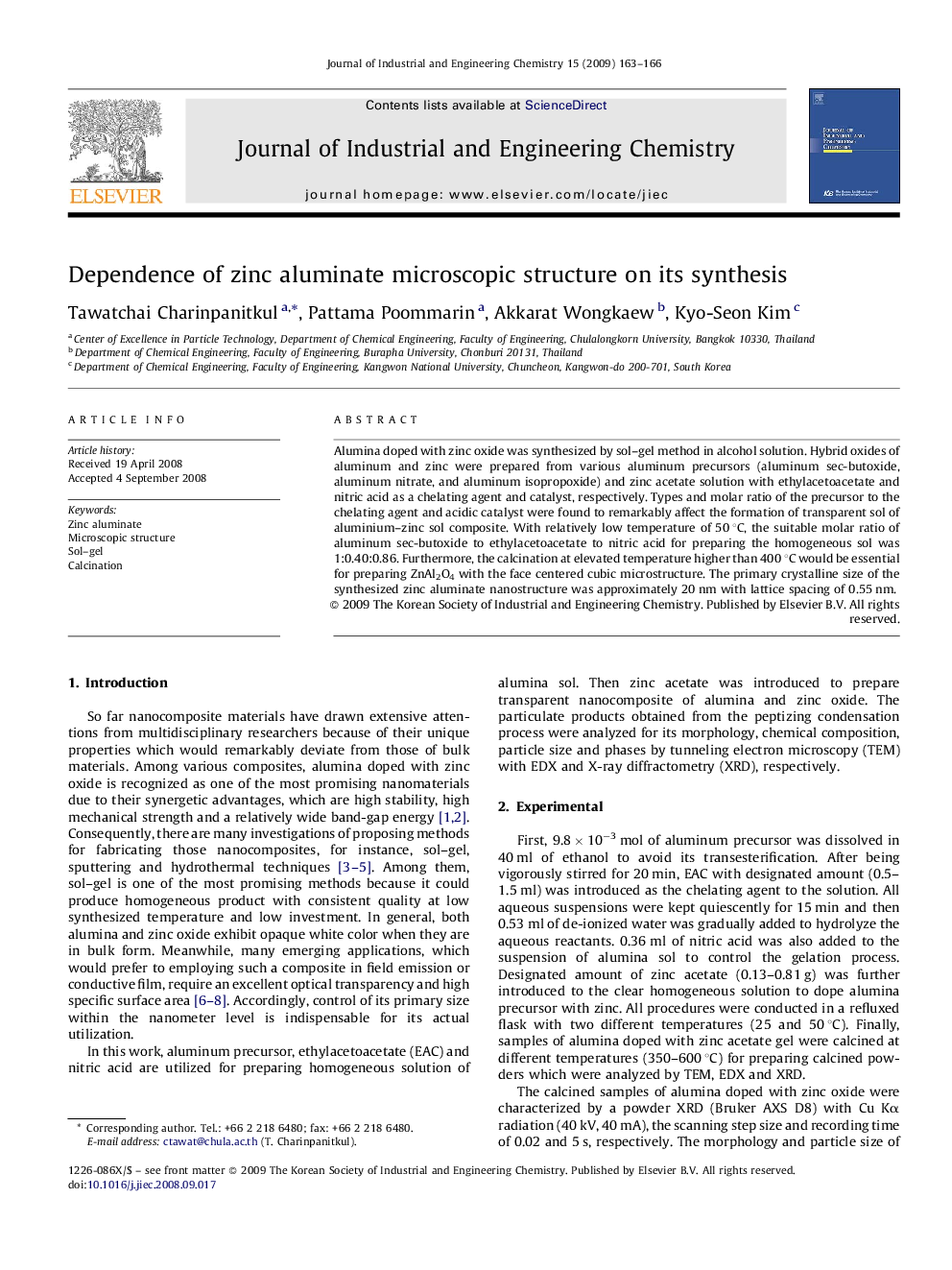| Article ID | Journal | Published Year | Pages | File Type |
|---|---|---|---|---|
| 229308 | Journal of Industrial and Engineering Chemistry | 2009 | 4 Pages |
Alumina doped with zinc oxide was synthesized by sol–gel method in alcohol solution. Hybrid oxides of aluminum and zinc were prepared from various aluminum precursors (aluminum sec-butoxide, aluminum nitrate, and aluminum isopropoxide) and zinc acetate solution with ethylacetoacetate and nitric acid as a chelating agent and catalyst, respectively. Types and molar ratio of the precursor to the chelating agent and acidic catalyst were found to remarkably affect the formation of transparent sol of aluminium–zinc sol composite. With relatively low temperature of 50 °C, the suitable molar ratio of aluminum sec-butoxide to ethylacetoacetate to nitric acid for preparing the homogeneous sol was 1:0.40:0.86. Furthermore, the calcination at elevated temperature higher than 400 °C would be essential for preparing ZnAl2O4 with the face centered cubic microstructure. The primary crystalline size of the synthesized zinc aluminate nanostructure was approximately 20 nm with lattice spacing of 0.55 nm.
